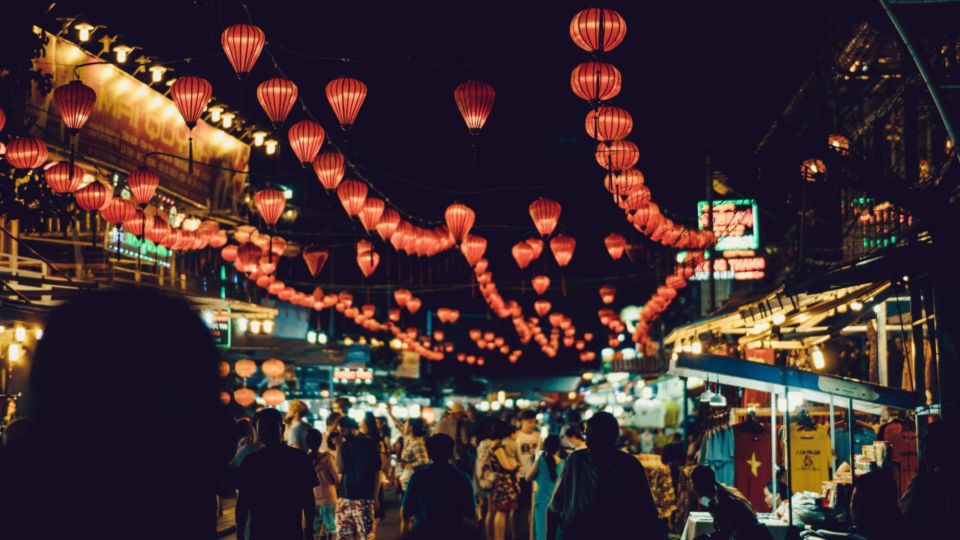Beaming lanterns, elaborate lion dance displays and tasty mooncakes are everywhere lately as one of the most celebrated Chinese festivals nears next week.
Many people around Asia celebrate the Mid-Autumn Festival or Mooncake Festival, happening on Sept. 10 this year, but do celebrants know that it originated tragically with a greedy king and its association with women’s menstruation cycles?
Coconuts condensed the wildest points of its origin story to give you a quick rundown on how this traditional Chinese festival came to be and why it’s about more than gorging on round-shaped cakes.
All hail the Moon!
The Mid-Autumn Festival dates back at least 2,000 years and is celebrated in most parts of Asia on every 15th day of the 8th month of the Chinese lunar calendar, when the moon is believed to be at its brightest and fullest.
The festival comes with a series of events and rituals meant to honor the earth’s satellite.
Lion dance performances, both non-professional and professional, grace streets and houses as a form of blessing for luck and fortune in exchange for money. Giant lanterns, which symbolize beacons of light that invite prosperity and good fortune, decorate the streets and are sold in stores.
The mooncake pastries, which seem to come in increasingly superfluous packaging each year, are largely sold and shared among families. They are typically filled with lotus-seed paste, sweet bean and egg yolk but flavors have since evolved as tastebuds grew towards trends, especially in Singapore.
The demand for the cakes is substantial enough in Singapore for them to go on sale months before the festive season.
When it began, the festival was more about celebrating the harvest but now its focus is on reunions with friends and family where mooncakes are heavily consumed.
Tragic and cultish origins
The first reference to Mid-Autumn appeared in the Rites of Zhou, a book on rituals from the Western Zhou dynasty (1046 to 771 B.C) but it was only celebrated by the Chinese starting in the Shang dynasty (1600 to 1050 B.C).
One of the most popular festival tales involves Chang’e, the Moon Goddess in Chinese mythology, and her husband Hou Yi, which is said to have originated from the Tang dynasty (618–907 CE).
In one of many versions of the story, Hou Yi, an archer and member of the Imperial Guard, was venerated after he shot down nine of 10 suns and saved the earth from scorching to death. He later became king but a tyrannical one and demanded an elixir of life for immortality, which Chang’e stole for the sake of the townspeople and drank. She then ascended to the moon while an angry Hou Yi shot at her but missed.
Chang’e became the Moon Goddess and subsequently, people prayed and gave offerings to commemorate her. Hou Yi died shortly after anger got the better of him.
Another popular tale involves the moon rabbit. Buddha had disguised himself as a starving old man and tested three animals -– a fox, a monkey and a rabbit. While the fox caught a fish and the monkey brought some fruits, the rabbit decided to throw itself into the fire to offer itself as food. Buddha then resurrected the rabbit and sent it to the moon to be worshipped.
On another note, a 2006 book titled Festivals of China’s Ethnic Minorities by Li Xing stated that the ancient Chinese’s obsession with rejuvenation linked the moon and water to menstruation, something they called “monthly water.”
Other beliefs come from a fable that the sun and moon are a couple and the stars are their children, which is why the moon becomes round when it is pregnant and sized down to a crescent after giving birth. Thus, the significance of women giving offerings to the moon on the day of the festival.
While the way the festival has been celebrated had varied through history, celebrating Mid-Autumn today is mainly about reuniting with loved ones over mooncakes, a tradition, like many others, that has been capitalized upon. It’s a neverending cycle between sellers and buyers who are fueling one another by placing greater emphasis on packaging, most of the time over the authenticity of taste and pricing, all to boast online or store jewelry in.
The festival is a much bigger deal in cities like Hong Kong but you can find your share of lantern light-up events and more family-friendly activities around town. Just don’t forget about the origins of the festival as you look up at the moon that night.
Other stories you should check out:
Korean street food stall-inspired restaurant opens tomorrow at Tanjong Pagar
Little Farms launches a five-course vegan menu for the whole of September




